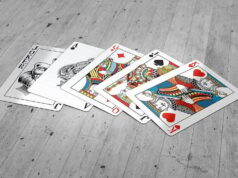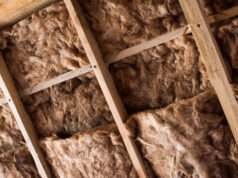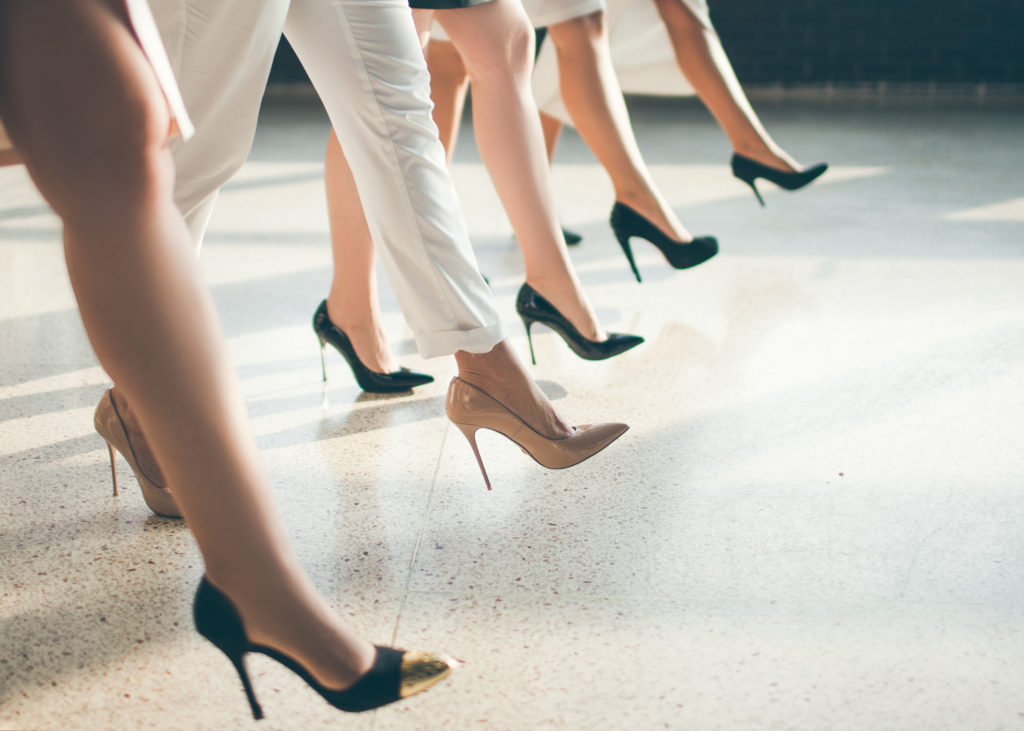
Choosing comfortable footwear isn’t always easy. There are a variety of different shapes and heights available, and each one offers its own benefits and drawbacks. Let’s take a closer look at the different types of heels so that you can find the one that is right for you.
Stilettos
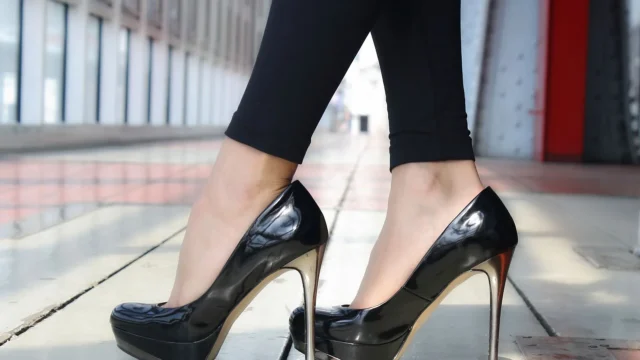
Stilettos are the most elegant of shoe silhouettes and the most difficult to walk in. They are identified by their narrow, high-pointed front, usually 1–3 inches in height. This type of shoe gives the appearance of height and adds a slender look to the calves and ankles. However, due to their thin design, they also pose difficulty when it comes to walking — they require extra caution and stability when worn.
A suggestion for individuals wishing to incorporate stilettos into their wardrobe during extended periods of walking would be to opt for thicker or chunkier styles that offer more support at the front. Additionally, shorter stilettos with a broader base may provide more traction which could make them easier to walk in than thinner designs.
Wedge Heels
Wedge heels are a stylish, comfortable, and manageable type of footwear that many women choose for both formal and casual events. They are created by a sole underneath the shoe that gradually tapers off in thickness from the back of the shoe to the front so that one sole piece makes up the entire length of the underside of the shoe.
They create a stable base for walking since they are typically much wider at their base than thin stilettos or block heels. This means they can provide more support and balance with every step compared to other types of shoes. They also tend to be more comfortable than other options since their design distributes weight evenly across your foot instead of concentrating it on one area. Wedge heels come in a variety of heights, colors, and materials, so you can find something that works best for your outfit as well as your comfort level.
Block Heels
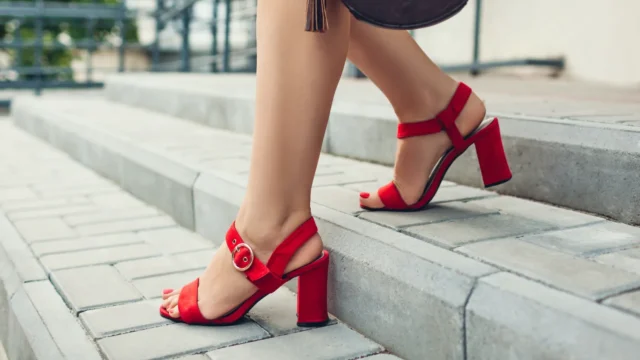
Block heels are a popular option for women who want extra height from a shoe without sacrificing comfort or stability. Their design also makes them a great choice for long days on your feet since they provide significant arch support. Unlike other models, they don’t require a balancing act when you walk; their wider heel base helps distribute your weight evenly and increase stability.
Block heels come in a variety of heights—from 2 inches all the way up to 6 inches—and styles such as pointed-toe, pump, slingback, open-toe, and wedges. They can be made with wood, rubber, and other material combinations to ensure comfort and flexibility while walking.
Kitten Heels
Kitten heels are a timeless staple in the fashion industry, graduating from office-appropriate to party-ready. Easily adaptable to all outfits, these short squat models are designed for comfort, making them ideal for everyday wear.
Typically, they measure between one and two inches (25 to 50 mm) and often feature a thin stiletto heel or slightly curved heel cap for added style. With the brand-new addition of updated colors and shapes, these low-heeled favorites can seamlessly transition from day to night with effortless class. Burudani offers a variety of models for everyone’s taste.
The Easiest Heel to Walk In
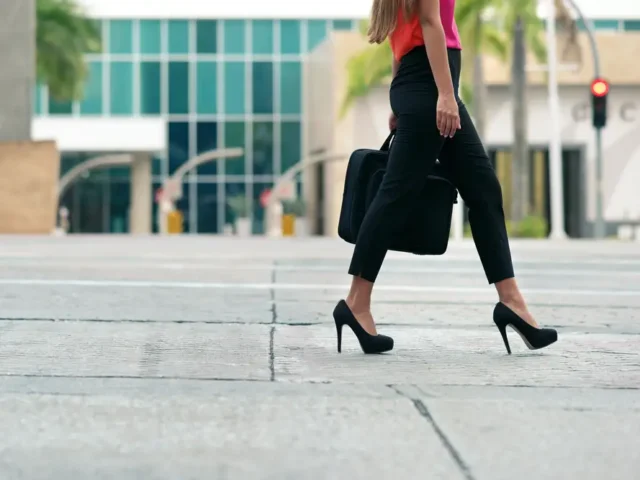
Low heels (1-2 inches) are generally considered a safe go-to for those that prize comfort and stability above a higher shoe height. Wedges and kitten models provide similar comfort to low heels but offer a greater sense of stability due to their wider base. Platform shoes also offer added balance and a higher sense of security than most other high-heeled shoes without increasing the overall height too dramatically.
For those looking to add height without sacrificing too much in terms of security or comfort, midi models (2-3 inches) offer a great middle-ground – they strike an attractive balance between sky-high stilettos and practical flats. However — make sure you buy good quality shoes as cheaply made models may lack support or padding around your feet causing attempted longer walks to be painful endeavors!
For some people, even these lower to medium heights can cause pain or cramping over time due to unsupportive insoles or bad posture – if this is something you’ve experienced before it’s probably best avoided going forward!
Tips for Walking in Heels
One of the most crucial tips to remember is that the type of heel plays a major factor in how comfortable it can be. Generally, the thicker and lower the heel is, the more comfortable it is for walking.
Wear the Right Size
When purchasing a pair of heels, wear the size best for your feet, and don’t try to buy shoes that are too small or too big. Off-the-shelf high-heeled shoes may not provide the best fit, as these are designed with a generic size range in mind. It is always worth having shoes fitted to your feet by a professional cobbler or shoe designer if you want the perfect luxurious style while ensuring optimum comfort and support.
Walk Slowly
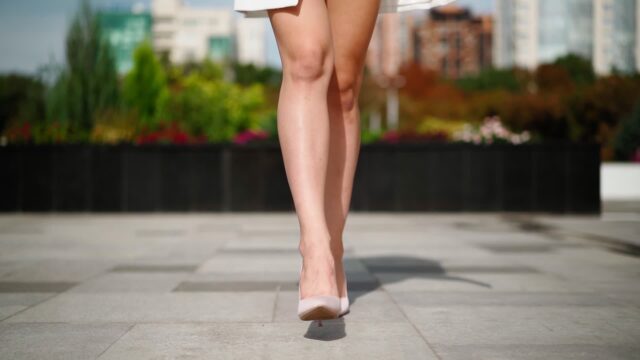
As tempting as it may be, don’t rush – it can cause you to misstep. Take smaller steps than normal and physically tell yourself to take your time. Help yourself stay balanced by giving your arms a wider range of motion and always being aware of your posture. It’s best to avoid looking down at the ground as this can lead to imbalance or stumbles; try focusing on the horizon or an item in front of you instead.
In order to reduce the risk of slippage, walk on smooth surfaces as much as possible – sidewalk grooves, cobblestones and hardwood floors can be slippery terrain for any heel wearer! Additionally, avoid outdoor surfaces where there may be loose stones or slick mud — these are especially wearable surfaces for fashionable shoes.
Conclusion
After analyzing all the pros and cons of various types of heels, it is safe to conclude that block heels and wedge sandals are the easiest to walk in. They offer the best balance and stability, and the chunky nature of these heels makes them more comfortable to wear for a long period of time. They also won’t cause as much strain on your feet, which is important for long days.

